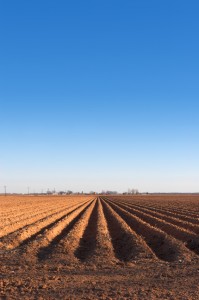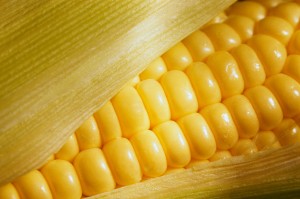
As the debate surrounding GMOs seems to have brought the manipulation of seeds into the spotlight, many of agriculture’s problems began long before this new technology reared its head. While it’s true that humans have always exerted a certain influence over seed selection by saving and replanting the best seeds from the healthiest plants, the breeding of new varieties really came to a high point around the end of World War II when plant biologists made strides with the hybridization of plants to carry selected traits. Although the resulting cross has what is known as ‘hybrid vigour’ and grows well for the first year, successive generations of seeds tend to be sterile, forcing the farmer into the necessity to purchase more seed each year. Another fact that is seldom considered is that the hybridization process takes an entire growing season just to produce the seed, so throughout the world vast tracts of land are set aside for seed production at the expense of food production.

If history is to be a judge, then it is clear that the majority of these ‘innovative seed varieties and new breeding techniques’ have led directly to the promotion of monocropped agriculture by profit-driven agribusiness interests. The post-WWII ‘Green Revolution,’ which was heralded at the time as the end of the world’s hunger problems through the promotion of hybrids, came hand-in-hand with chemical fertilizers as the ammonium nitrate factories that were used to produce bombs for the war were converted to the manufacture of ammonium nitrate fertilizers. As biodiversity was exchanged for monoculture, imbalances arose that to this day continue to be met with the growing use of pesticides, herbicides, and fungicides. In countries like Malawi, this shift in agriculture moved farmers very quickly from no-input agriculture (apart from labor) to high-input agriculture that locks the farmer into financial dependency on the purchase of expensive agribusiness commodities. Now, even in times of bumper yields, many farmers find that they are forced to sell off large portions of their harvest to recover the costs of the inputs; costs which continue to rise as they are directly linked to the price of petroleum.

Many developing countries were also forced to move away from diverse, perennial, and seasonal access to food security, and now find themselves trying to imitate a ‘temperate-climate’ type of monocropped agriculture in which a limited variety of food is tried to be produced for the entire year in a short 3-4 month season. What this has meant in Malawi is that farmers plant their maize crops in December during the onset of the rains, but don’t harvest that maize until April. During this same period of time (the most agriculturally productive season of the year) is when the maize reserves from the previous year run out and the entire country experiences a ‘hungry season’ and food shortages. Despite having a 12-month growing season, Malawi’s monocropped maize fields lie in a literal desert of uselessness for 11 months out of the year. Now, when this over-emphasis on hybrid monoculture is failing we see efforts to push these plants to ever greater extremes through the forced alteration of their genetic structure (a process of genetic engineering, which is as far removed from the process of hybridization as it is from nature).

There is certainly still a need for further research, but as Never Ending Food is located at Malawi’s largest agriculture research station, we have seen that for many years the majority of money, time, energy, and resources have all been devoted to researching how to get hybridized maize to adapt to African growing conditions (and now the country has begun trials on genetically engineered crops such as cotton). If, on the other hand, we had incorporated any of the hundreds of African food plants into the research paradigm, we could have doubled or tripled the size of our research institutions, developed value-added products, expanded export markets, and created opportunities for employment. We don’t need to study these plants to see how corporations like Monsanto can patent them and use them to keep farmers locked into an economic stranglehold, but rather to see how these diverse and valuable resources can be integrated into sustainable systems of production, how they can be utilized to provide for the nutritional needs of the nation, and how they can reduce poverty through an increased access to diversified sources of income. These open-pollinated and robust varieties of African seeds do not need ‘improving’, they simply need to be recognized and appreciated for their inherent worth. Once Africa realizes the true value of its natural resources, there will be no doubt about its ability to feed itself and, in turn, the abundant surplus can be used to feed the world.
